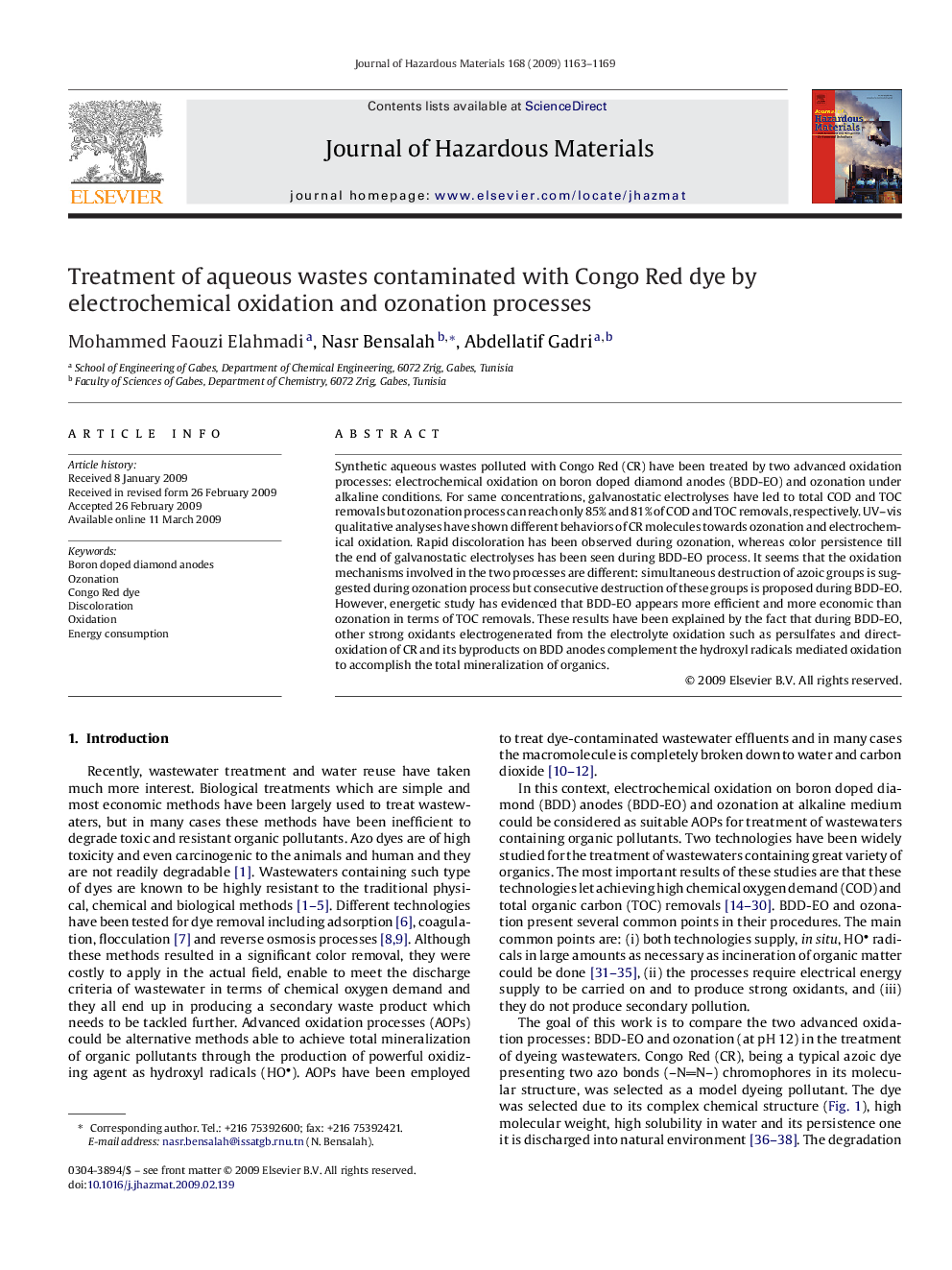| Article ID | Journal | Published Year | Pages | File Type |
|---|---|---|---|---|
| 581726 | Journal of Hazardous Materials | 2009 | 7 Pages |
Abstract
Synthetic aqueous wastes polluted with Congo Red (CR) have been treated by two advanced oxidation processes: electrochemical oxidation on boron doped diamond anodes (BDD-EO) and ozonation under alkaline conditions. For same concentrations, galvanostatic electrolyses have led to total COD and TOC removals but ozonation process can reach only 85% and 81% of COD and TOC removals, respectively. UV-vis qualitative analyses have shown different behaviors of CR molecules towards ozonation and electrochemical oxidation. Rapid discoloration has been observed during ozonation, whereas color persistence till the end of galvanostatic electrolyses has been seen during BDD-EO process. It seems that the oxidation mechanisms involved in the two processes are different: simultaneous destruction of azoic groups is suggested during ozonation process but consecutive destruction of these groups is proposed during BDD-EO. However, energetic study has evidenced that BDD-EO appears more efficient and more economic than ozonation in terms of TOC removals. These results have been explained by the fact that during BDD-EO, other strong oxidants electrogenerated from the electrolyte oxidation such as persulfates and direct-oxidation of CR and its byproducts on BDD anodes complement the hydroxyl radicals mediated oxidation to accomplish the total mineralization of organics.
Related Topics
Physical Sciences and Engineering
Chemical Engineering
Chemical Health and Safety
Authors
Mohammed Faouzi Elahmadi, Nasr Bensalah, Abdellatif Gadri,
